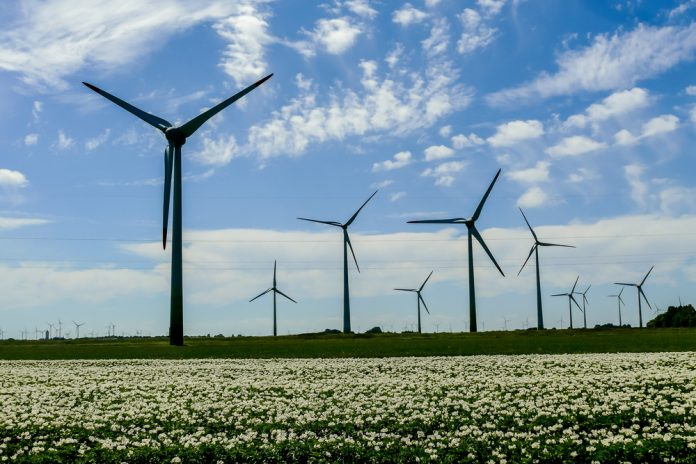
Wind turbine service technicians will experience the most significant job growth over the next ten years, outpacing every other profession, the Bureau of Labor Statistics recently reported.
The continued pivot toward alternative green energy, particularly offshore wind generation, is the sparkplug behind the surging demand. So, too, is the federal government, which seeks to have 30 gigawatts of offshore wind operating by the end of the decade.
Every wind energy technician is needed to achieve this lofty mark.
Wind Turbine Technicians
One stipulation: There are not enough qualified technicians to install and maintain turbines.
There are currently about 7,000 wind turbine technicians in the U.S., federal data show, and many don’t have “long-term experience,” a report from Harvest Energy Services advises. “Even if they did, there’s a huge amount of work for them to carry out,” the report’s author said.
To meet swelling work demand, federal officials say the country will need approximately 4,700 more by 2030, representing an enormous 68 percent increase in labor.
Where will all those workers come from in the next few years?
Further, most of the industry’s workforce is only knowledgeable in onshore wind operations, not offshore. There is a good reason why. While the United States is a world leader in onshore wind generation, second only to China, it lags in offshore wind capacity, trailing China and much of Europe.
But an assortment of private and public initiatives—impressive in size and scale and grander in sheer monetary investment—are fast in the works. For example, construction is underway at the country’s first utility-scale offshore wind energy project, more than 15 miles off the coast of Massachusetts. Proposals are also in the works for various offshore wind projects along the northeast shoreline.
Now is the time to begin work on closing the offshore wind technician skills deficit in an equally speedy fashion with emerging technology, robust human sources strategies, and innovative training regimes.
Here are three steps the offshore energy sector can take to close the wind technician shortfall.
Use Niche Job Boards and Recruitment Agencies
What digital channels do you use to source a hard-to-find skillful candidate in a far-off region?
Indeed, LinkedIn, CareerBuilder?
Each platform proudly claims to be the jack-of-all-trades, posting jobs from nearly every industry to show everyone.
You’ll get views, even applications—but rarely from suitable candidates.
These channels are generalist recruiting instruments, dabbling in numerous sectors and never mastering any. Many recruitment agencies suffer from the same lack of industry-specific expertise.
And their audiences aren’t what the renewable offshore energy sector sorely needs. Most experienced wind technicians are not on these platforms.
A more tactical approach? Use niche job boards, many of which are backed by specialized recruiting agencies.
Industry-focused job boards use multimodal, geographic-specific methodologies that, based on the characteristics of your job ad, allow you to reach the audiences you need in the exact locations you require faster.
Further, niche HR recruitment technologies offer more qualified job leads in less time and more cost-effective measures by advertising your position on all applicable sites, not just one. For instance, in small rural communities, jobs are promoted on hyperlocal job boards, classified advertising websites, and brand-name employment sites. In college towns, word spreads through alum networking channels and campus job fairs, creating visibility and accelerating your reach.
Create, Don’t Find, Your Next Wind Turbine Team
Even with the best-reaching capabilities, the offshore wind sector cannot recruit a workforce that has worked on 15 other offshore wind projects because, unlike several other countries, the United States hasn’t had that many offshore projects.
Instead, sourcing and plucking talent from other energy sectors would be better, including onshore wind energy generation and traditional energy production like coal, oil, and natural gas.
Then, retrain them—digitally, at home with new, specialized digital training technologies, not away, which turbine training traditionally involves.
While research shows that the “main method of training” for offshore wind technicians includes “long-term on-the-job training,” there are numerous methods for hastening their education and expanding their experience with today’s new array of digital training programs.
For example, while the skillset required by traditional energy generation differs from wind energy production, many attributes include working in inclement weather and comfort in climbing large, towering structures. Also, each skill is transferable for serving, installing, maintaining, and repairing offshore turbines.
The offshore wind sector could also hire and retrain onshore wind technicians. While the composition of onshore turbines differs from their onshore peers—larger, include more unknown variables, and involve more complex engineering—many of the basic skills still apply and are transferable, fast-tracking work to recreate wind generations’ next workforce.
Get Tomorrow’s Workforce More Excited
The immediate need for more wind turbine technicians, paired with the sector’s notable talent shortfall, means one thing above all else: more rewarding career and financial opportunities for those throughout the industry in the years ahead.
Better get the word out.
That means present-day sixth graders need to know about the job opportunities that await them as soon as they graduate high school.
Think about young middle schoolers in rural regions in the Midwest and Northwest, pondering their future. Onshore wind turbines are familiar sights for students in Texas, Iowa, Kansas, Illinois, and Oklahoma, the states with the most wind electricity generation.
What they see every day could quickly become a way of life.
But to do that, the industry must excel more at disseminating valuable educational resources for apprentices looking to dabble in a fast-growing field. The full-fledged PR front must include digital instruments such as email and social media engagement.
In other words, begin training tomorrow’s workforce before they become an applicant and before they’re ever really interested in working.
Sow the seed—with today’s workforce and its next generation.



